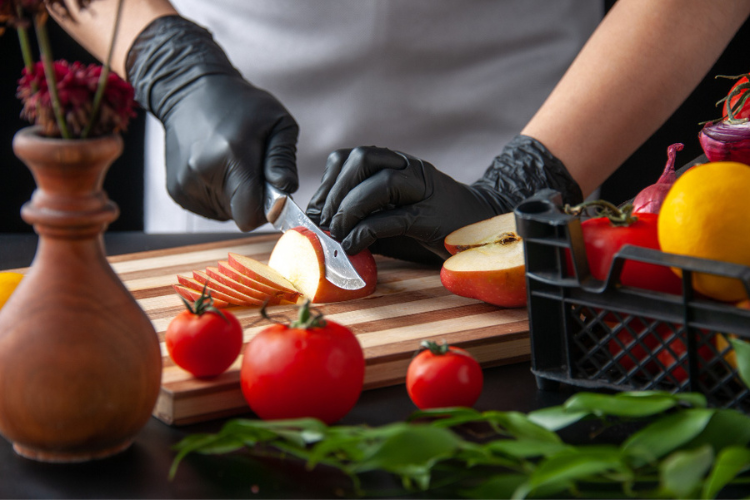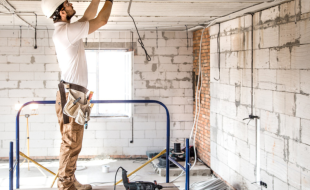Table Of Contents
- What Is Food Safety Equipment Design All About?
- What Is The Quiet Threat Inside The Facility That The Food Safety Equipment Design Targets?
- What Are The Core Principles Of Food Safety Equipment Design?
- 1. Prevent Contamination
- 2. Ensure Cleanability
- 3. Use Appropriate Materials
- 4. Design For Maintenance And Accessibility
- 5. Consider Certifications
- Why Proactive Food Safety Equipment Design Matters?
- Food Safety Equipment Design Is The Support Systems That Strengthen Safety
- Food Safety Equipment Design Focusing On Prevention, Not Just Response
Rethinking Equipment Design To Stay Ahead Of Food Recalls
Guess what? We live in the fast-paced environment of food production. And here, product recalls remain one of the most serious risks a facility can face.
Additionally, I must add that they not only threaten consumer health. But it also does the following:
- Strains the company’s finances
- Damages reputations
While recalls often appear to happen suddenly, they are frequently rooted in long-standing issues with how equipment is designed.
Also, I will explain how you can maintain the food safety equipment design.
What Is Food Safety Equipment Design All About?
Food safety equipment design focuses on creating efficient machinery. Additionally, it has to be easy to clean and maintain.
The main goal is to prevent contamination from:
- Harmful microorganisms
- Chemicals
- Foreign particles
To achieve this, designers prioritize using materials like stainless steel. Such materials are a good choice because they are:
- Smooth
- Durable
- Non-porous
This helps eliminate any nooks and crannies where bacteria might thrive.
Additionally, it’s very important that every part of the equipment is accessible for thorough cleaning and inspection.
By ensuring that the machinery is well-designed, we can prevent it from becoming a source of hazards.
Additionally, we can significantly reduce the risk of cross-contamination.
Ultimately, this approach leads to safer food products.
Also, it contributes to public health and consumer confidence in the food supply.
What Is The Quiet Threat Inside The Facility That The Food Safety Equipment Design Targets?
Food manufacturing teams work hard to meet cleanliness standards. But even their best efforts can fall short.
This happens when the equipment itself poses a challenge.
What contributes to sanitation problems? Well, the list consists of:
- Surfaces that trap debris
- Seams that allow buildup
- Complex components that are difficult to access
These design flaws often go unnoticed until contamination is detected—long after products have left the facility.
Outdated or modified equipment can be particularly problematic. Over time, as parts are replaced or retrofitted, machines may drift further from modern hygienic standards.
If cleaning takes too long or cannot be done thoroughly, risks naturally increase.
Even small oversights can snowball into serious hazards when sanitation routines are forced to work around poor design.
What Are The Core Principles Of Food Safety Equipment Design?
These are the core principles by which the food safety equipment design stands:
1. Prevent Contamination
Equipment must be designed to prevent biological, chemical, and physical contamination.
So, you will have to avoid sharp corners and crevices. These are the areas where microorganisms hide and multiply.
Ensure materials do not react with cleaning agents, lubricants, or other chemicals used in processing.
Prevent foreign particles, such as those from chipped coatings or worn parts, from entering the food.
2. Ensure Cleanability
Surfaces must be smooth, non-porous, and easy to clean and sanitize. Equipment should be made for thorough cleaning.
This includes systems that allow for cleaning in place. There should be no gaps or areas where food debris can collect.
3. Use Appropriate Materials
Also, you have to make sure that only non-toxic and non-absorbent materials are used.
Also, make sure you avoid coatings at all costs. They can chip and contaminate the product.
4. Design For Maintenance And Accessibility
It’s essential to make sure that all parts of your equipment can be easily accessed for inspection, maintenance, and cleaning.
Keeping a proper clearance—like having at least 12 inches of space off the floor—helps avoid debris buildup and makes it easier to clean underneath.
Additionally, sealing hollow areas can help prevent bacteria from developing inside.
Taking these steps keeps things running smoothly and promotes a cleaner, healthier environment.
5. Consider Certifications
When it comes to equipment, choosing ones that comply with standards from organizations like the European Hygienic Engineering & Design Group (EHEDG) or 3-A Sanitary Standards is crucial.
These products are crafted with cleanliness and safety in mind, making them much easier to clean and maintain.
It’s all about ensuring a safe environment!
Why Proactive Food Safety Equipment Design Matters?
To reduce contamination risks before they arise, manufacturers are investing in machines that make hygiene a priority.
Rounded edges, sealed joints, and angled surfaces help prevent the accumulation of residue.
These elements not only meet inspection requirements, but they also actively support day-to-day cleanliness by eliminating hiding spots for bacteria.
Modern systems also limit the need for hands-on involvement. So, Automation allows for more consistent performance.
Additionally, this will also help you to reduce opportunities for cross-contamination caused by human error.
With fewer manual touchpoints and better process control, production lines run more safely and more smoothly.
Food Safety Equipment Design Is The Support Systems That Strengthen Safety
Equipment alone isn’t enough. The best-designed machine still needs to be paired with:
- Timely support
- Reliable maintenance
When facilities have easy access to replacement parts and technical service, they can respond quickly if something breaks down.
Additionally, when you promote early intervention, it often prevents more serious issues from developing.
Employee training is another key part of a strong safety strategy. Staff need to understand how to clean and maintain each piece of equipment correctly.
The easier the design is to work with, the more likely it is that sanitation will be performed properly and consistently.
Food Safety Equipment Design Focusing On Prevention, Not Just Response
No company relishes the idea of being in damage-control mode. By prioritizing equipment design right from the beginning, food facilities can significantly cut down on the chances of recalls and the headaches that come with them.
It’s essential that every piece of machinery on the production line is designed with cleanability, simplicity, and serviceability in mind.
This isn’t just about sidestepping potential issues. It lays the groundwork for improved production efficiency, smoother operations, and ultimately, a safer product for consumers.
If food companies take equipment design seriously, they put themselves in a better position to protect their customers, meet industry standards, and build long-term trust.
Explore how intentional equipment design and proactive process planning come together to reduce risk in the visual breakdown of the recall lifecycle from Bak Food Equipment, a provider of automated spiral smoking lines.















